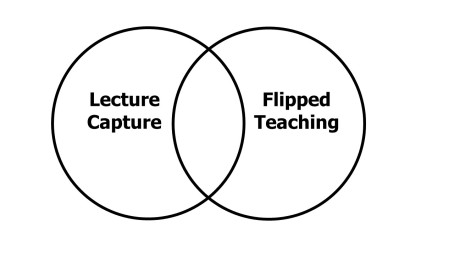There’s a lot of discussion at the moment around the notion of “flipped teaching” or the “flipped classroom”. The common thread is the requirement (or opportunity) for students to do some kind of course-related work on their own, away from the classroom setting.

However, there’s a problem. Some people may think I’m being picky, but I believe that sloppy usage of the phrase “flipped teaching” is significantly muddying the waters. Specifically, I worry that the notions of flipped teaching and “lecture capture” are being conflated, to the detriment of careful examination of both.
In recent days I’ve had cause to read two different articles purporting to be about flipped teaching. In both cases, the work described a comparison of attendance at a live lecture versus watching a recording of the lecture. These are investigations of the potential impact of lecture capture, but they are NOT flipped teaching. Flipping the classroom requires that there is still some face-to-face classroom task. Advocates for this approach, of which I am one, would argue that the point of moving some of the activities out of the face-to-face session is to require (or at least encourage) students to have engaged in some preparatory work that makes the subsequent contact time richer and (probably) more interactive than a traditional lecture would have been. But there has still got to be some real world encounter between an academic and their students.
Now there is clearly overlap between lecture capture technology and flipped teaching. Tools such as Panopto can be efficient ways to prepare short videos to be watched before the face-to-face session. But not all flipped classroom preparation is necessarily video based (it might, for example, involve reading something instead). Equally, giving students the opportunity to watch a recording of a lecture they missed is a valuable catch-up tool, but this is not flipped teaching per se.


